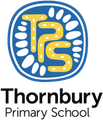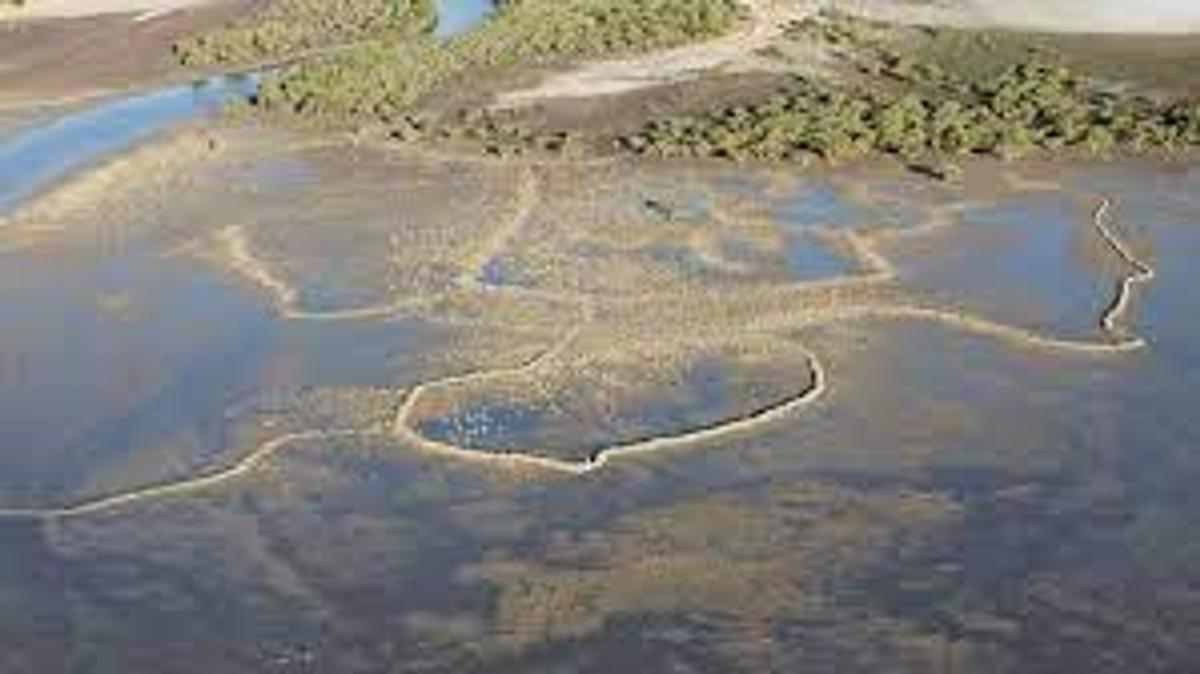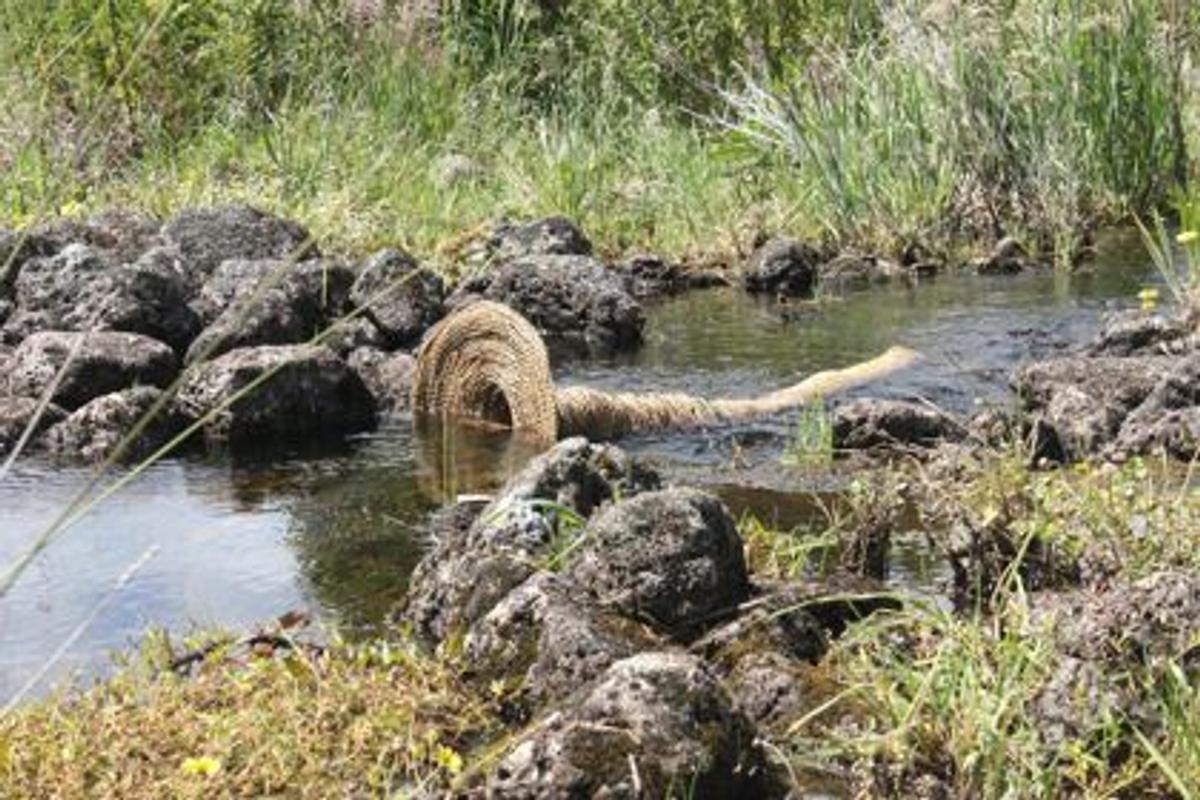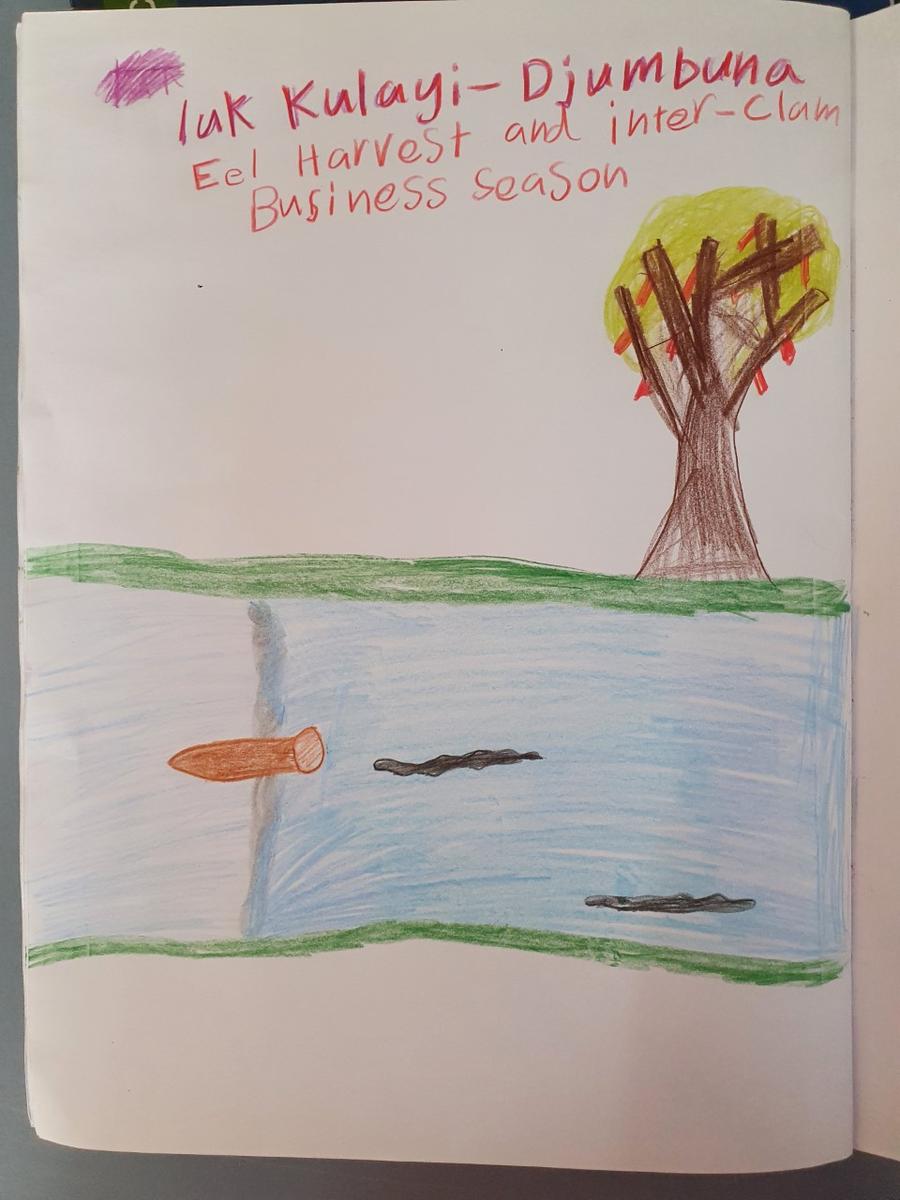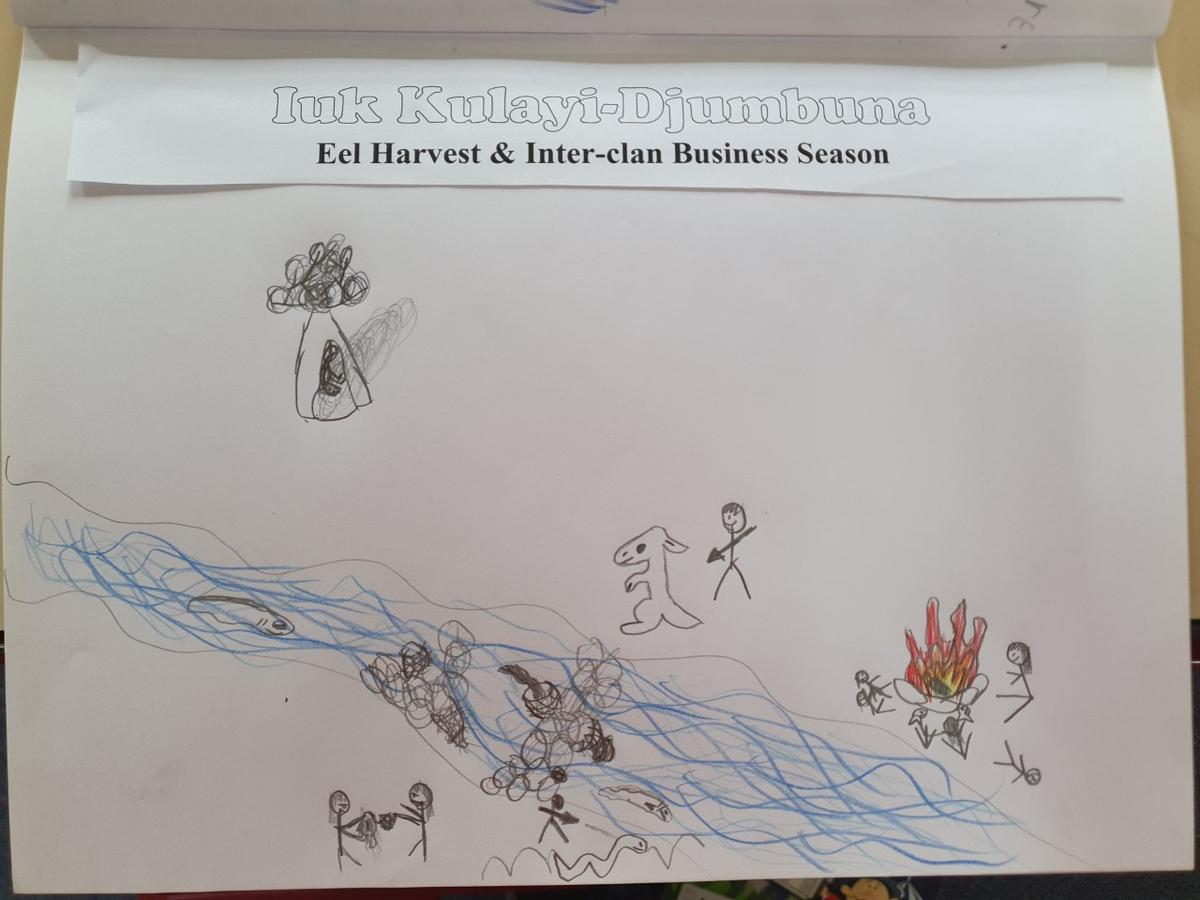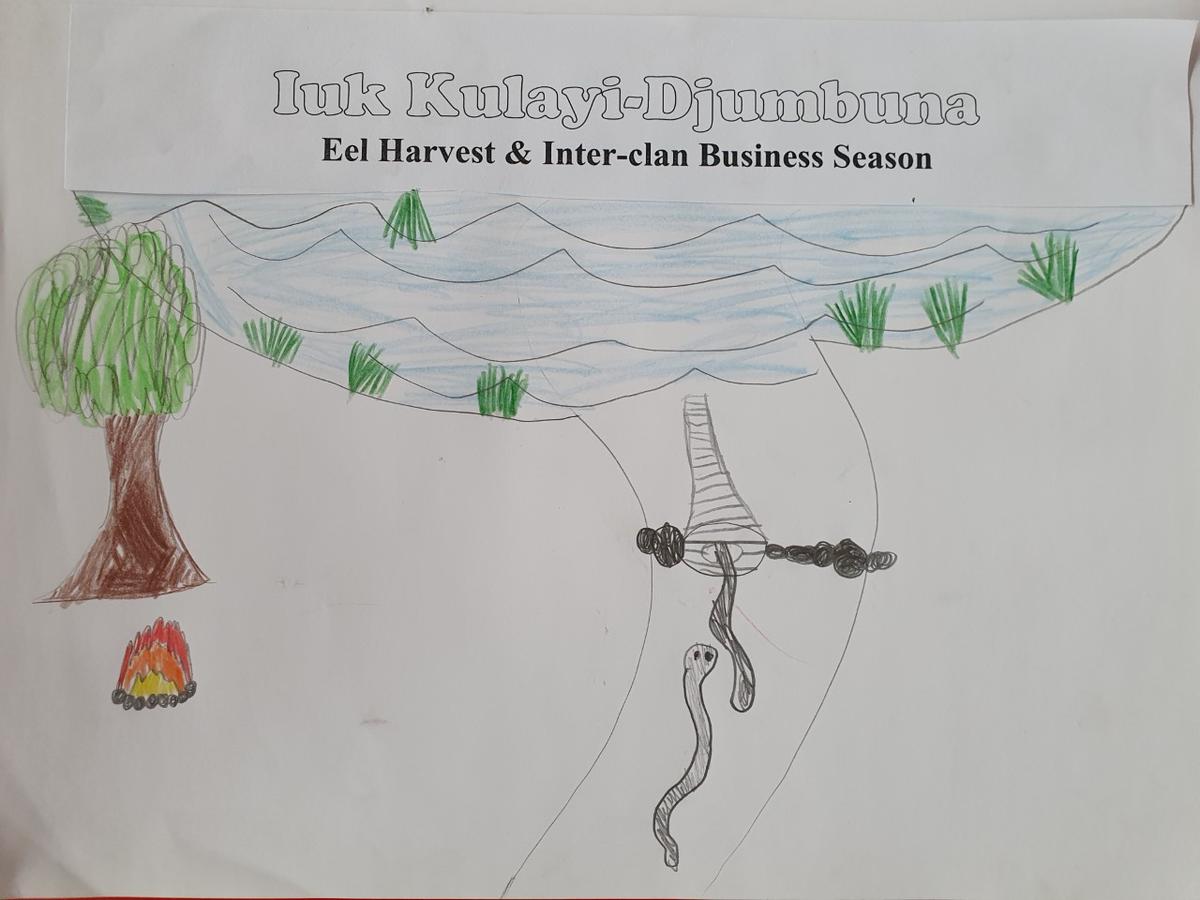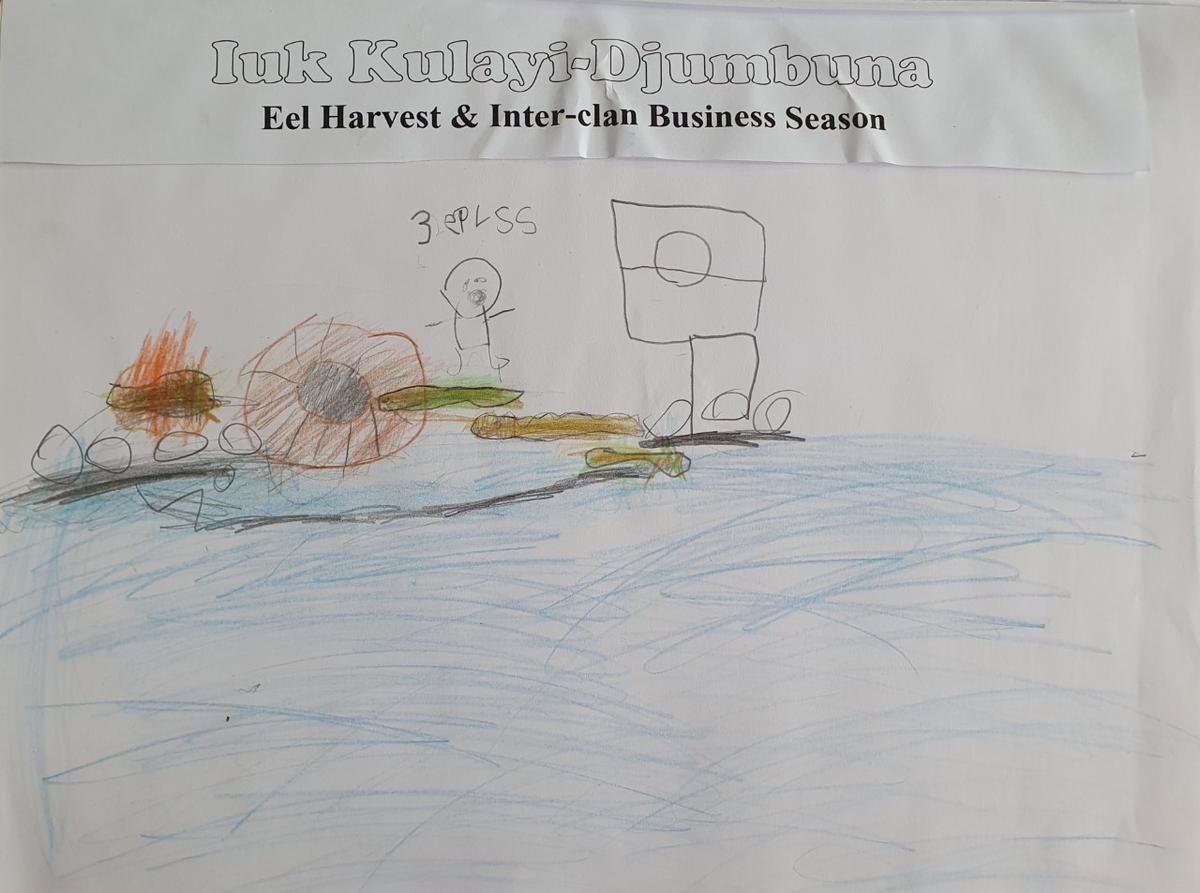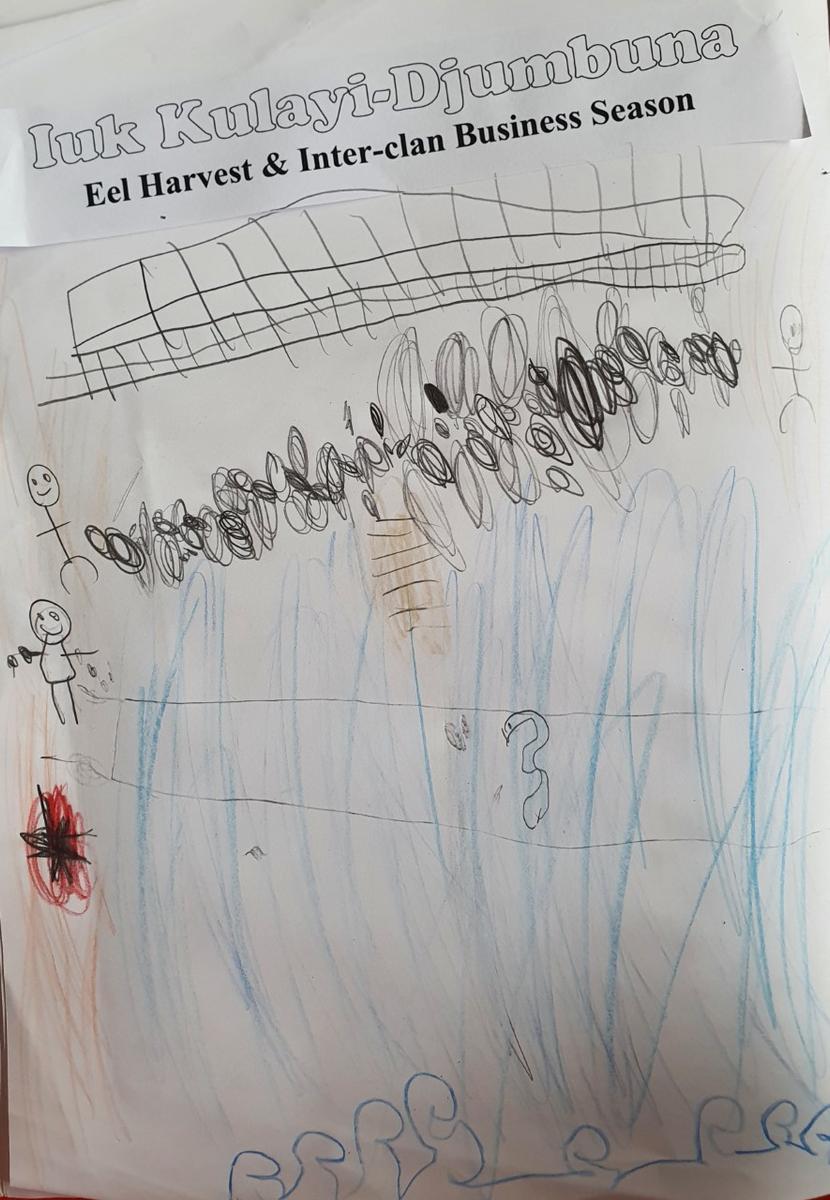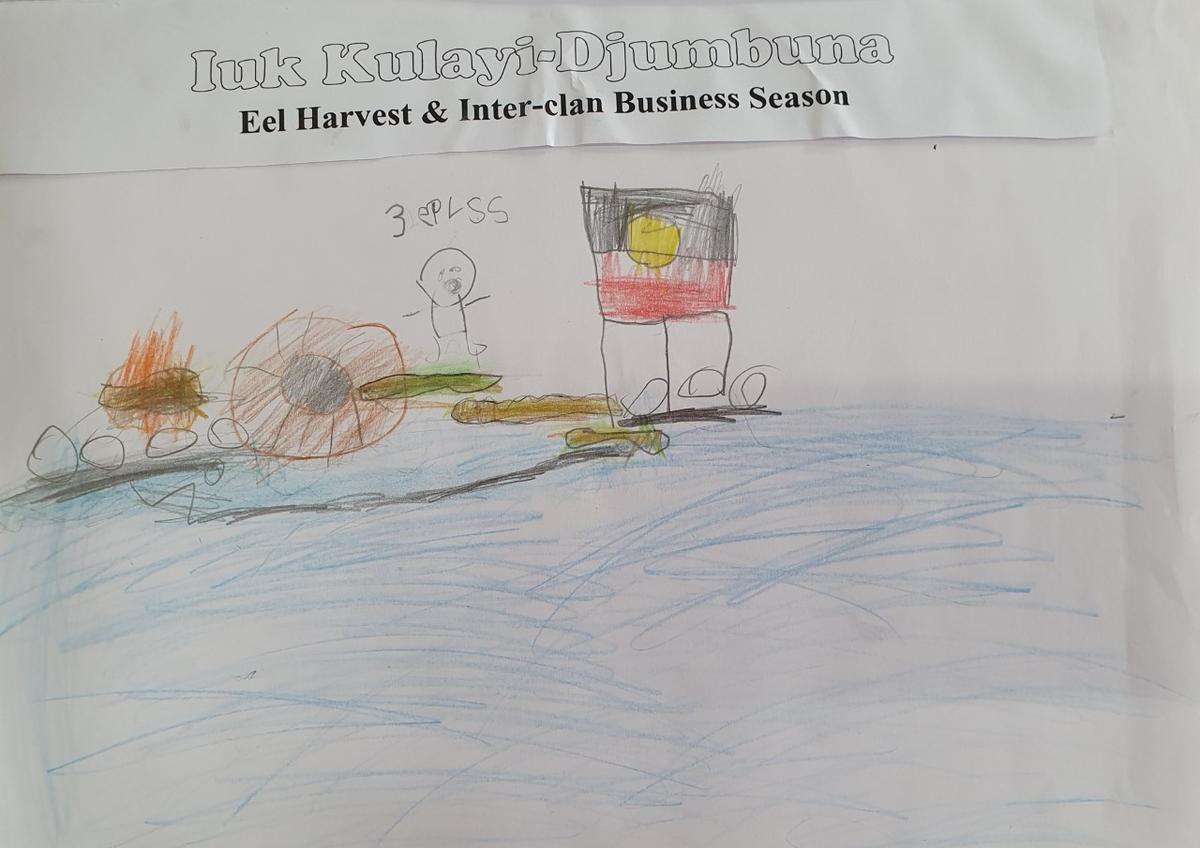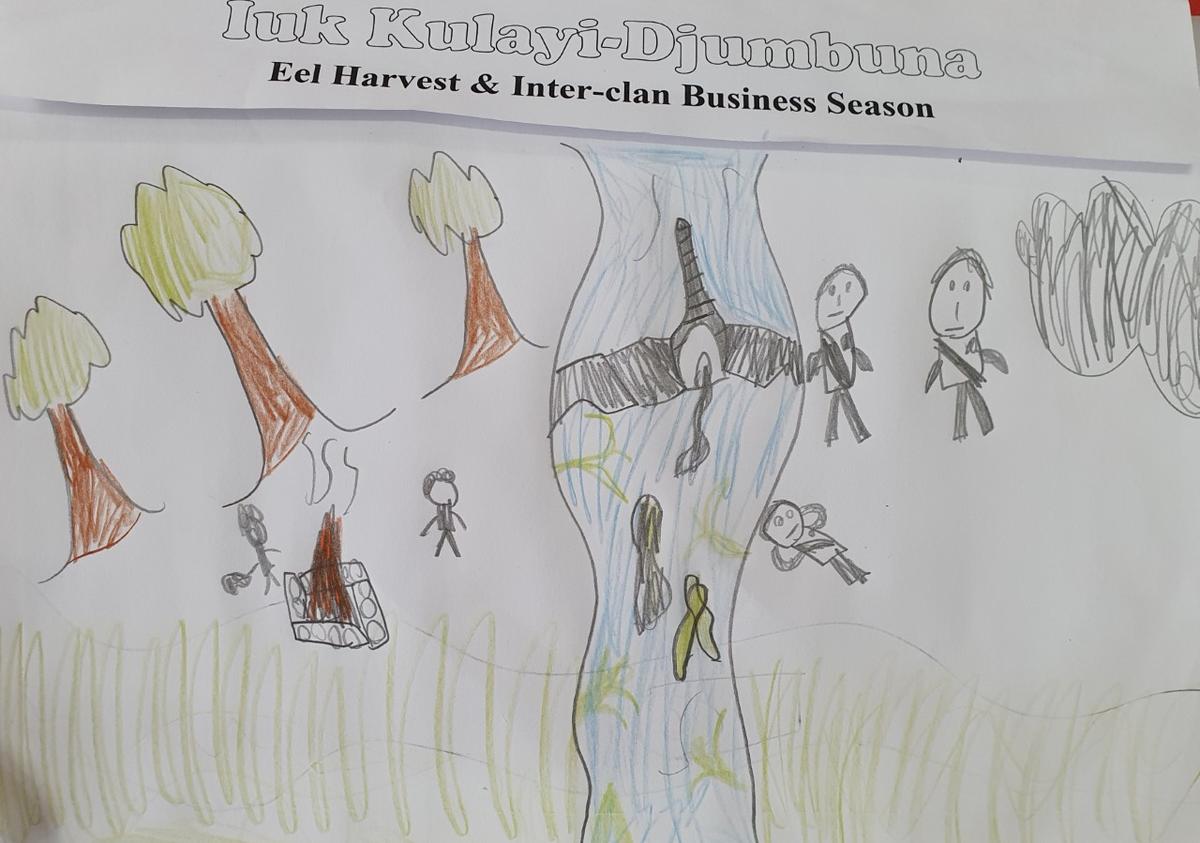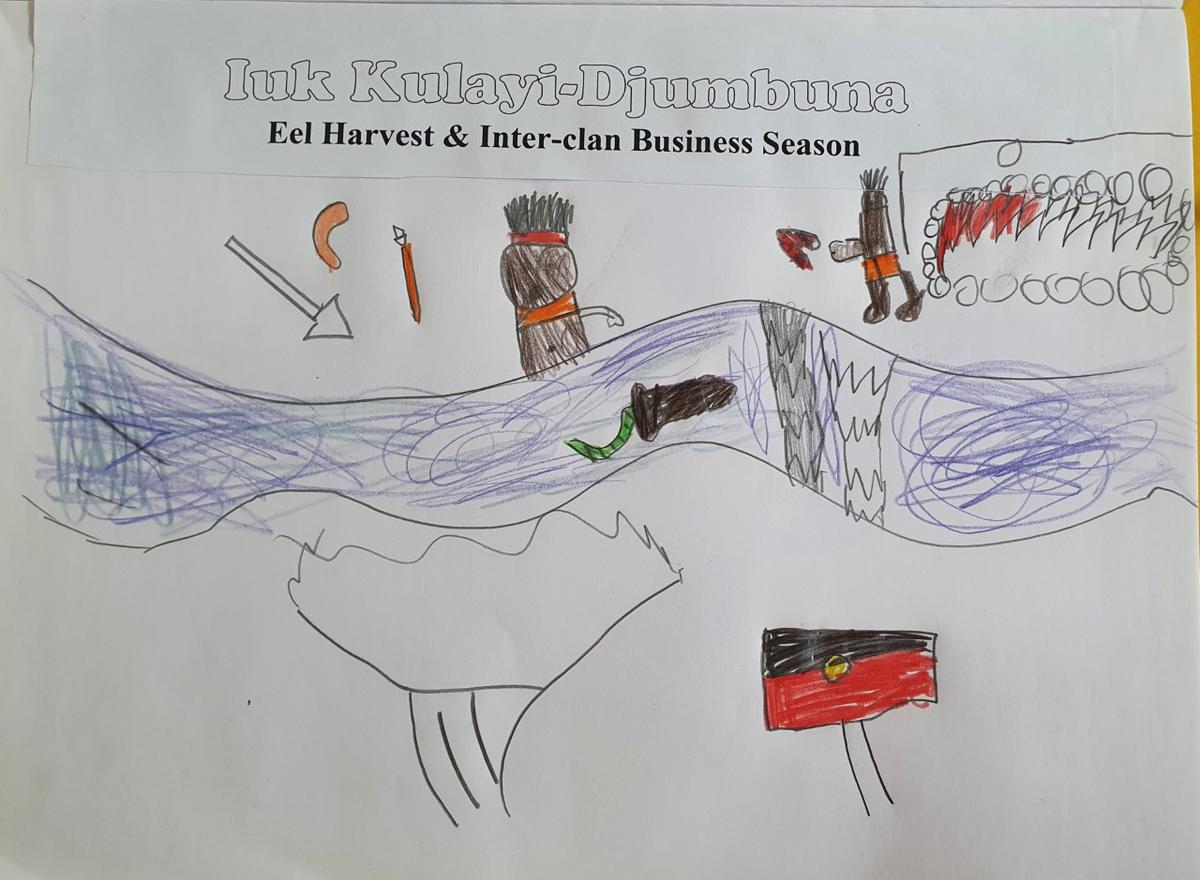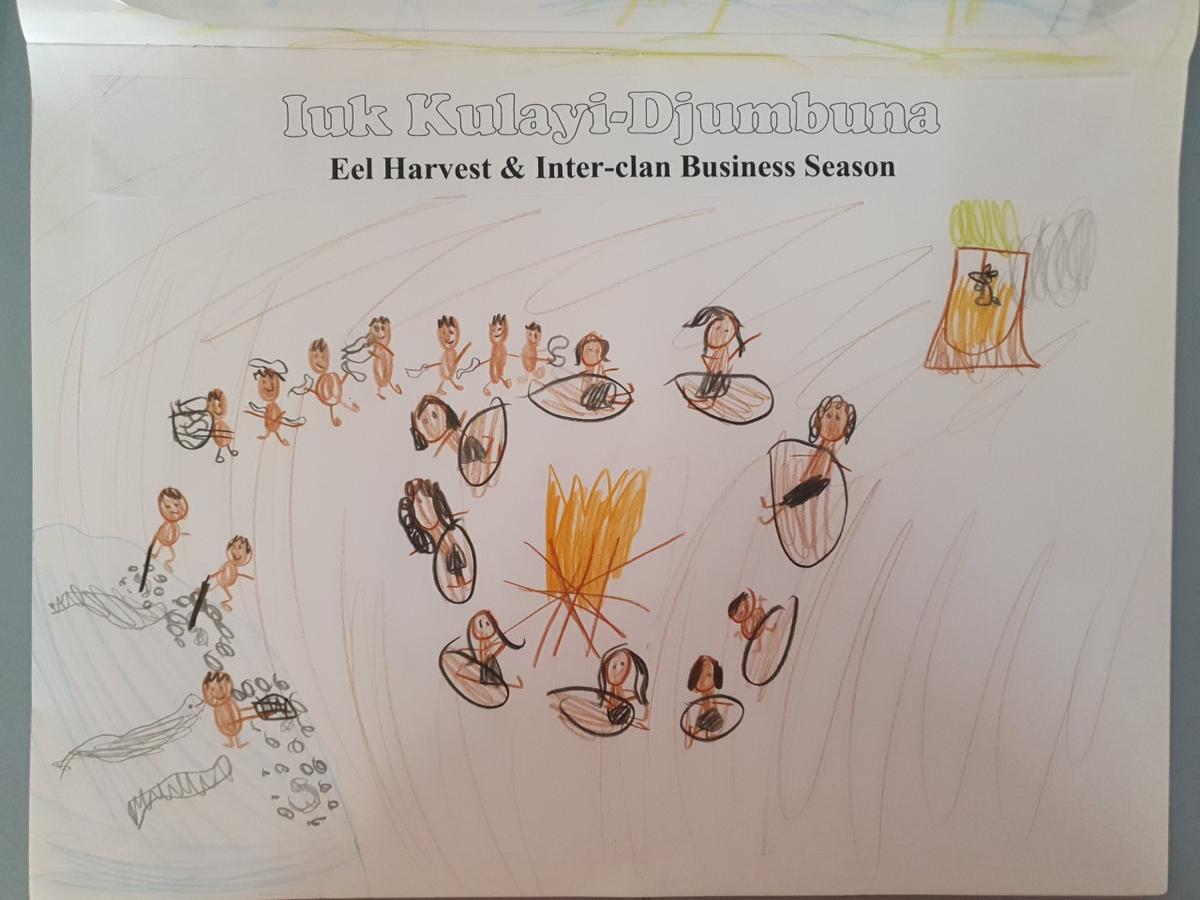Language & Culture Program
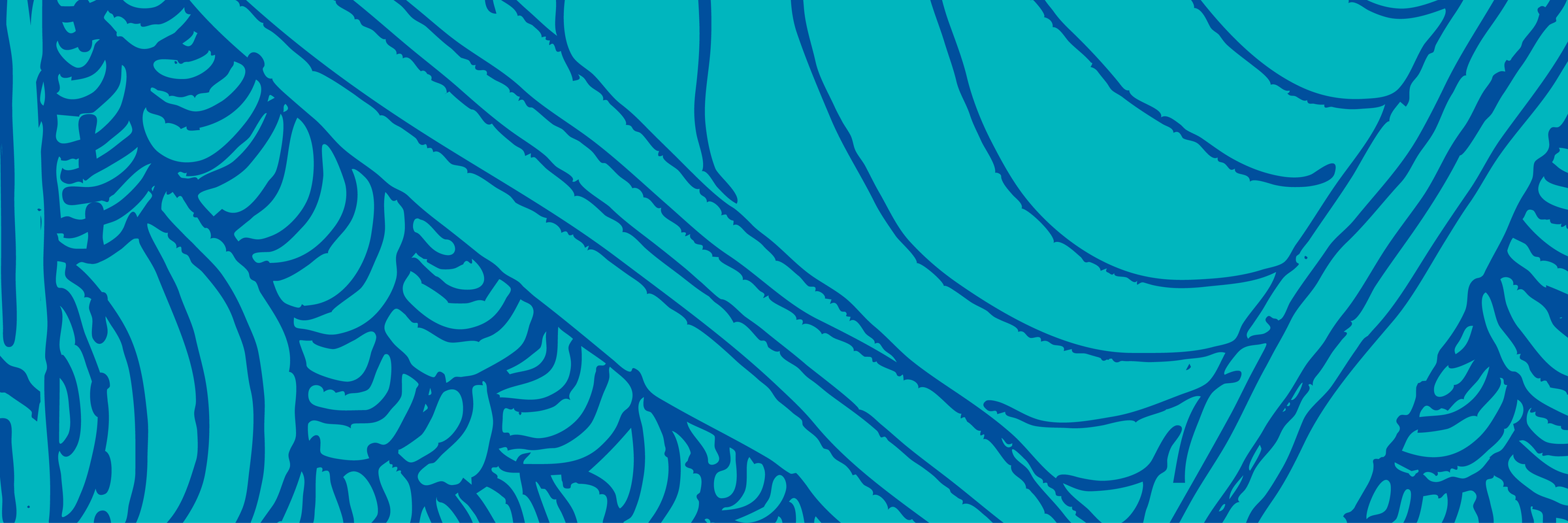
Kii, Deadly TPS community, biladu-njan wat/how are you all? And in the words of my Yawuru language...Ngaji gurrjin/Hello everyone!
This term, we have been learning about three of the eight Wurundjeri Seasons in Melbourne:
Winmali Yalambi-Gurnung - Hot North Wind and Fishtrap Season, which occurs late December to mid February. Winmali (win-ma-lee) is the Woiwurrung word for ‘hot north wind’ and yalambi-gurnung’ (ya-lum-bee-goorn-oong) literally means ‘hang around the river’.
Students have been learning about how First Nations people, as the world’s first engineers and scientists, built structures such as fish and eel traps to complement their food supplies. As the river flows were at their lowest level for the year, this was therefore the most appropriate time for making repairs to existing fish and eel traps or constructing new ones.
https://www.abc.net.au/news/2019-08-12/fight-to-save-ancient-indigenous-fish-traps/11396302
Time would also be devoted to other engineering works such as excavating deep water nurseries for fish and yabbie breeding, and extending their mussel farms. This extension to mussel farms and repair of fish and eel traps, was assisted by using the rocks excavated from the deep water nurseries. The repair of eel traps was vital for the coming iuk (eel) harvest season.
Students in grades 3-6 learned about the amazing fish trap system at Brewarrina (NSW), built by the Ngemba people. Our Ngemba students were very proud to have this amazing engineering feat showcased in our learning about fish trap structures such as these, that First Nation Peoples across the continent built on Country. Check out the videos below:
Brewarrina Fish Trap:
Baiames Ngunnhu - the Story of Brewarrina Fish Traps:
https://www.youtube.com/watch?v=7uYKg1M6PRk
- Iuk Kulayi-Djumbuna - Eel Harvest and Inter-Clan Business Season which occurs mid February to mid March. As the heat eases and the weather begins to cool down, travel across Country to inter-clan meetings could more easily be undertaken.
This second part of the summer season was also differentiated by the annual eel harvest activity that occurred. During this season, mature, fattened ten to thirty year old eels begin migrating down the Birrarung and other southern rivers, on the way to their spawning grounds in the Coral Sea. It was therefore a time of great annual feasting on the migrating eels with the neighbouring clans of the Wurundjeri and Kulin Nation. During this period, people would conduct much inter-clan business of justice, trade, dispute resolution, marital arrangements and firestick farming schedules for the coming year.
Kangaroo stocks from the nearby firestick maintained paddocks and possum stocks from the nearby woodlands were culled in advance, to cater for the influx of guests, with the carcasses stored in smoking trees to be ready for their arrival.
Students in grades 3-6 are also learning about the amazing World Heritage listed Budj Bim eel trap system on Gunditjmara Country, which our Gunditjmara students are also very proud to have showcased in our learning.
https://aiatsis.gov.au/explore/fishing
Click on the link below to learn more about the Budj Bim eel trap system:
Wundabil Tadool-Marguk - Thunderstorm and Rug-Sewing Season. High west wind electrical storms normally occur in this early Autumn period from mid March to mid April.
Because of these electrical storms, Wurundjeri activities in traditional times were again centred around their wilam (homes). It was during this time that the pelts accumulated over the eel and inter-clan business season were converted to rugs, cloaks, carry bags and suchlike.
We will spend the last part of Term 1 learning about this season.
(Reference for the seasons: The Eight Wurundjeri Seasons in Melbourne, Jim Poulter, 2015)
The main language focus in Foundation for Term 1 has been about learning some basic classroom commands, toilet and drink requests, answering yes/no to simple questions, basic greeting and farewell, greeting song, birthday song. Foundation students will continue to develop their awareness of the sounds in the Woiwurrung language through focused listening of the language being modelled.
Students in year one to six are continuing to learn and practice greetings and introductions, basic conversation phrases and classroom commands.
They will continue to grow and consolidate their vocabulary knowledge of family/people nouns, class totem animal names, and relevant topic words. Students will also continue to develop their knowledge of the different sounds in the Woiwurrung language, and depending on their grade level, the associated letter patterns used to write these sounds: Year 1/2 will focus on short vowels and single letter consonants; Year 3-6 will focus on short and long vowels, single and double letter consonants. Studentswill continue to develop their knowledge and understanding of basic Woiwurrung grammar, with a particular focus on the use of suffixes to determine subject (the do-er), object, and tense (time).
Have a chat with your child/ren about what they are learning.
Twaganin (Woiwurrung) Galia (Yawuru) / See you later
